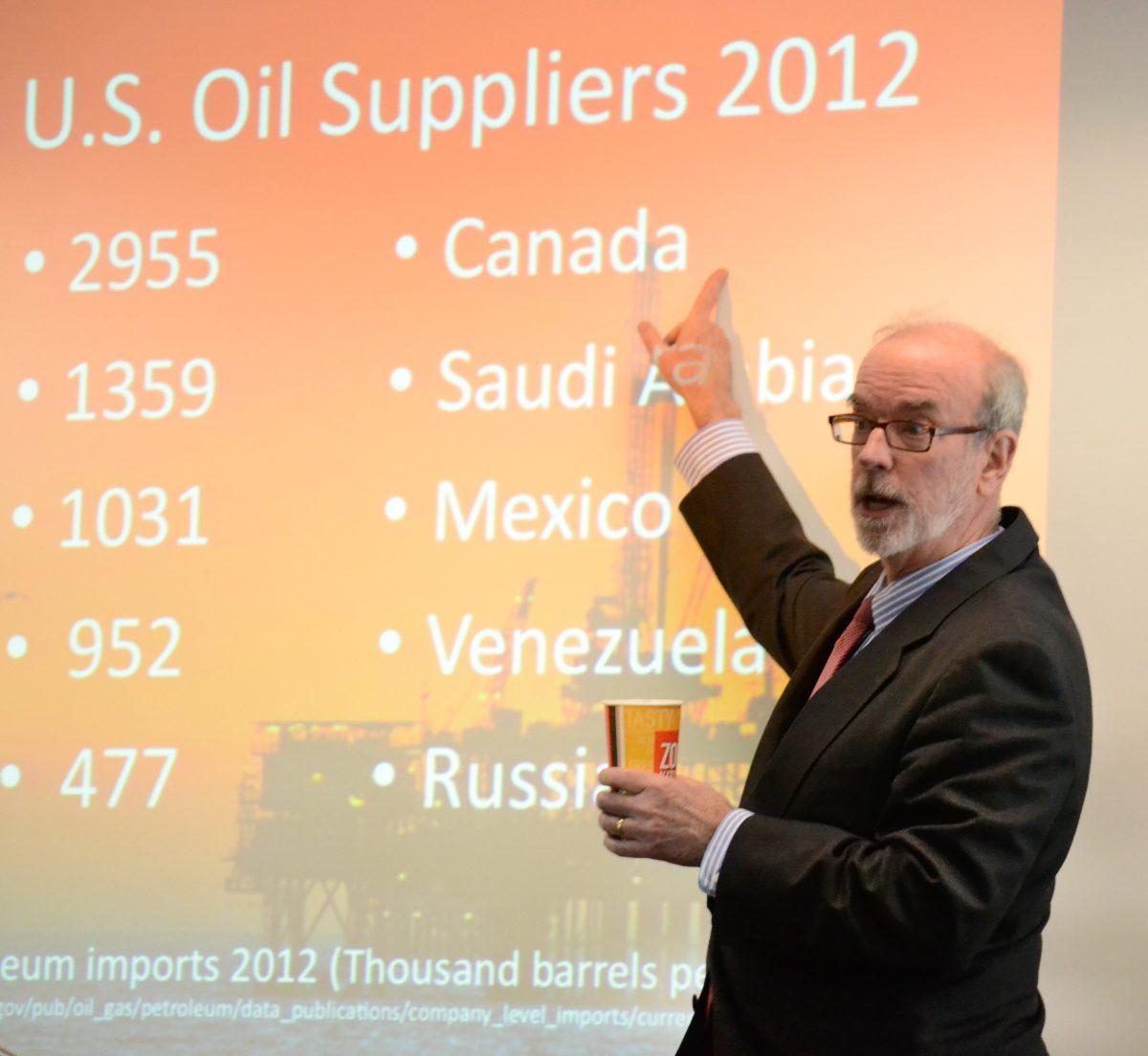Stephen Kelly visited N.C. State Monday to discuss the logistics of the Keystone XL Pipeline and possible security threats from China because of Canadian oil.
Kelly, a professor at the Duke Sanford School for Public Policy, said most Americans would be shocked to know the United States imports most of its oil from Canada.
Canada accounts for a quarter of the oil the U.S. has to import, with Saudi Arabia being our second highest supplier, according to the U.S. Energy Information Administration.
“We are the only country that buys Canadian oil,” Kelly said. “Mostly because we have the industry to refine their heavy, crude oil.”
Kelly said Canada currently has 98 percent of its oil reserves in the Oil Sands region of Alberta. All of the oil the U.S. imports from Canada comes from underground pipelines.
Five years ago, Canada proposed a plan to build the Keystone XL Pipeline that would run from the Oil Sands through Montana, South Dakota and Nebraska to the Gulf Coast, Kelly said.
Kelly said the pipeline has not been fully built yet, due to discussions concerning environmental issues around the Ogallala Aquifer in Nebraska.
“If Keystone isn’t built, the current pipelines will reach capacity by 2014,” Kelly said.
Nebraska recently proposed a new route that would go around the aquifer instead of through it. The proposal is currently under review by the State Department, according to Kelly.
Kelly said the United States’ decision to build the Keystone XL pipeline could help improve gas prices, especially on the West Coast where gas prices are currently higher than anywhere else in the U.S.
He added that since national oil companies are controlling 80 percent of the world’s oil, Canada is a special case because its oil companies are open to the private sector.
Canada currently owns 64 percent of its oil companies, the U.S. 12 percent and China 7 percent, according to the Environmental Information Administration.
“Our energy security position is getting stronger and stronger,” Kelly said.
China, as a current world power, could pose a threat to the oil industry if it continues to buy small shares in Canada’s oil companies, Kelly said. In 2004, China didn’t own any percentage of Canada’s oil companies, and now it owns seven.
“I’m not sure if we need to be worried,” Kelly said. “It’s up to each individual, but this stuff is damn interesting.”
Kelly said China completed its first purchase of an entire Canadian oil company in the Oil Sands region Feb. 25. This investment cost $1.4 billion — the largest offshore investment China has ever made, according to Kelly.
Jonathan Ocko, head of the history department, said China imports 60 percent of the oil it consumes and is projected to increase that to 75 percent next year. This growth contrasts the U.S. since it’s beginning to import less foreign oil and produce more domestically, Kelly said.
“Energy security should be our goal,” Kelly said.
According to Kelly, there are predictions that the U.S. will be the world’s largest oil producer by 2020. According to the EIA, the U.S. is projected to rise from producing 7.3 million barrels a day in 2014 to 7.9 million, and the numbers will keep growing.
He said China has been patient by only buying small shares of Canadian oil companies at a time so they do not trigger American public concern. Ocko said China is currently the largest world lender.
“The oil in the Oil Sands region is going to be developed whether we buy it or not,” Kelly said.








